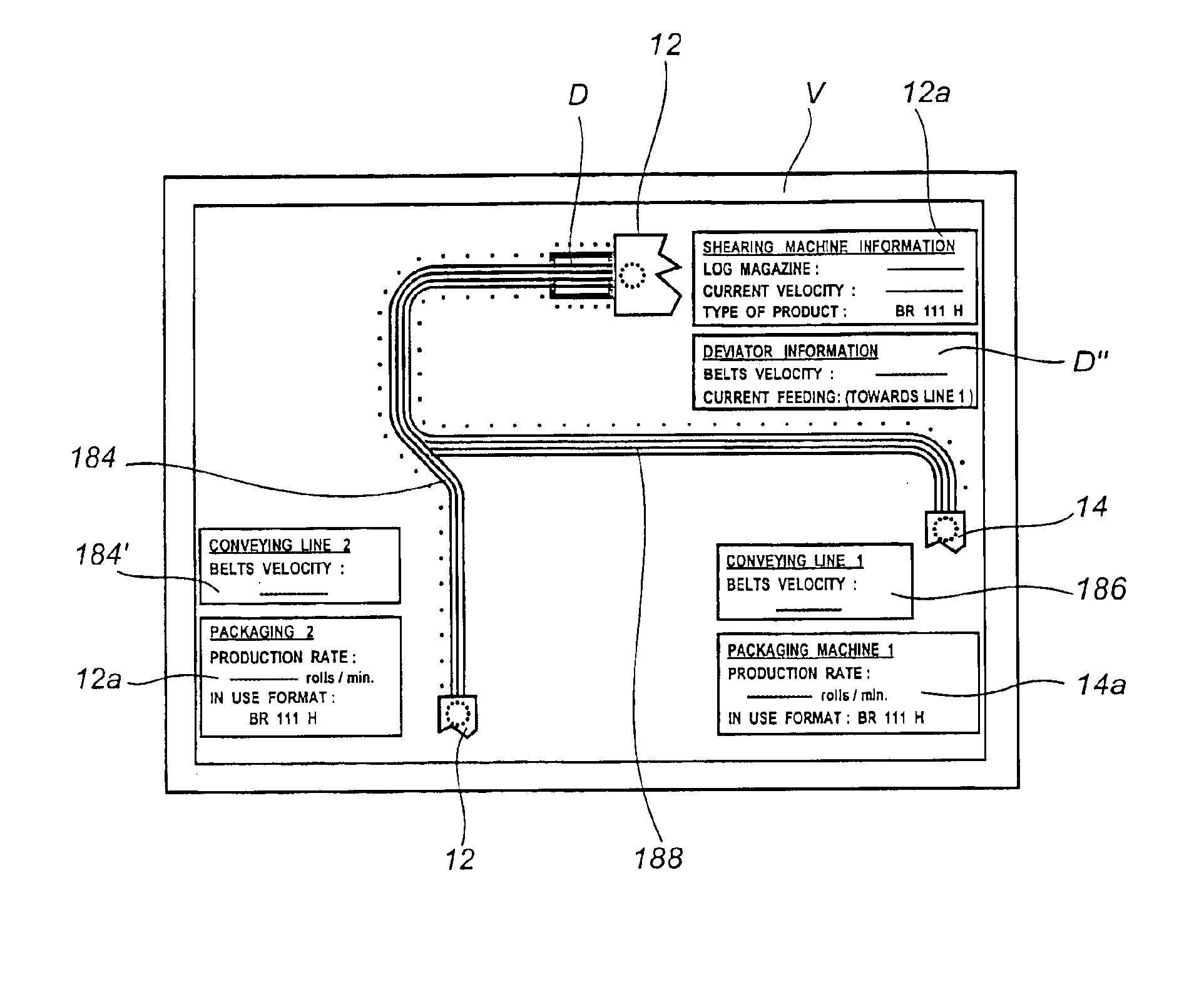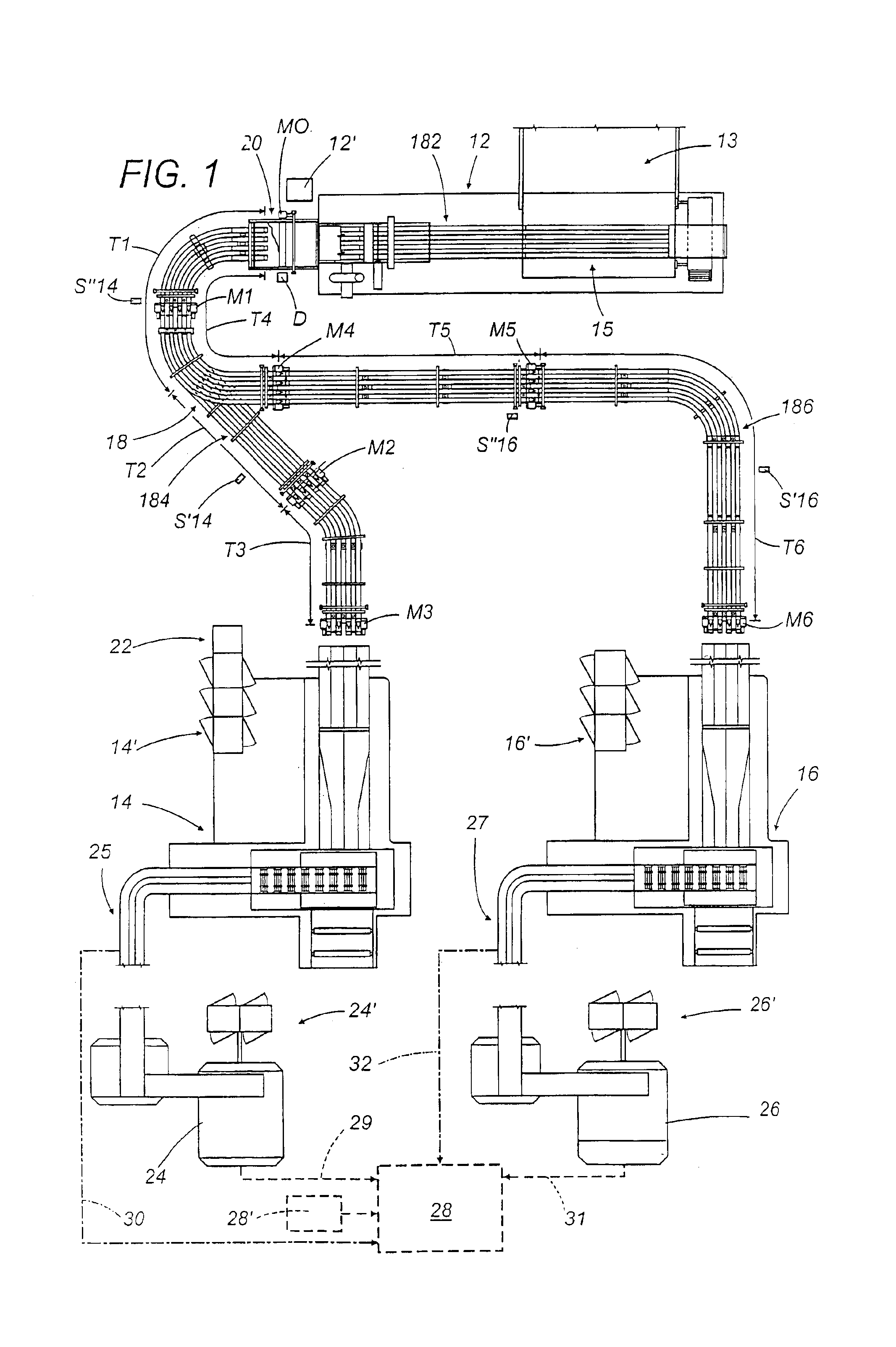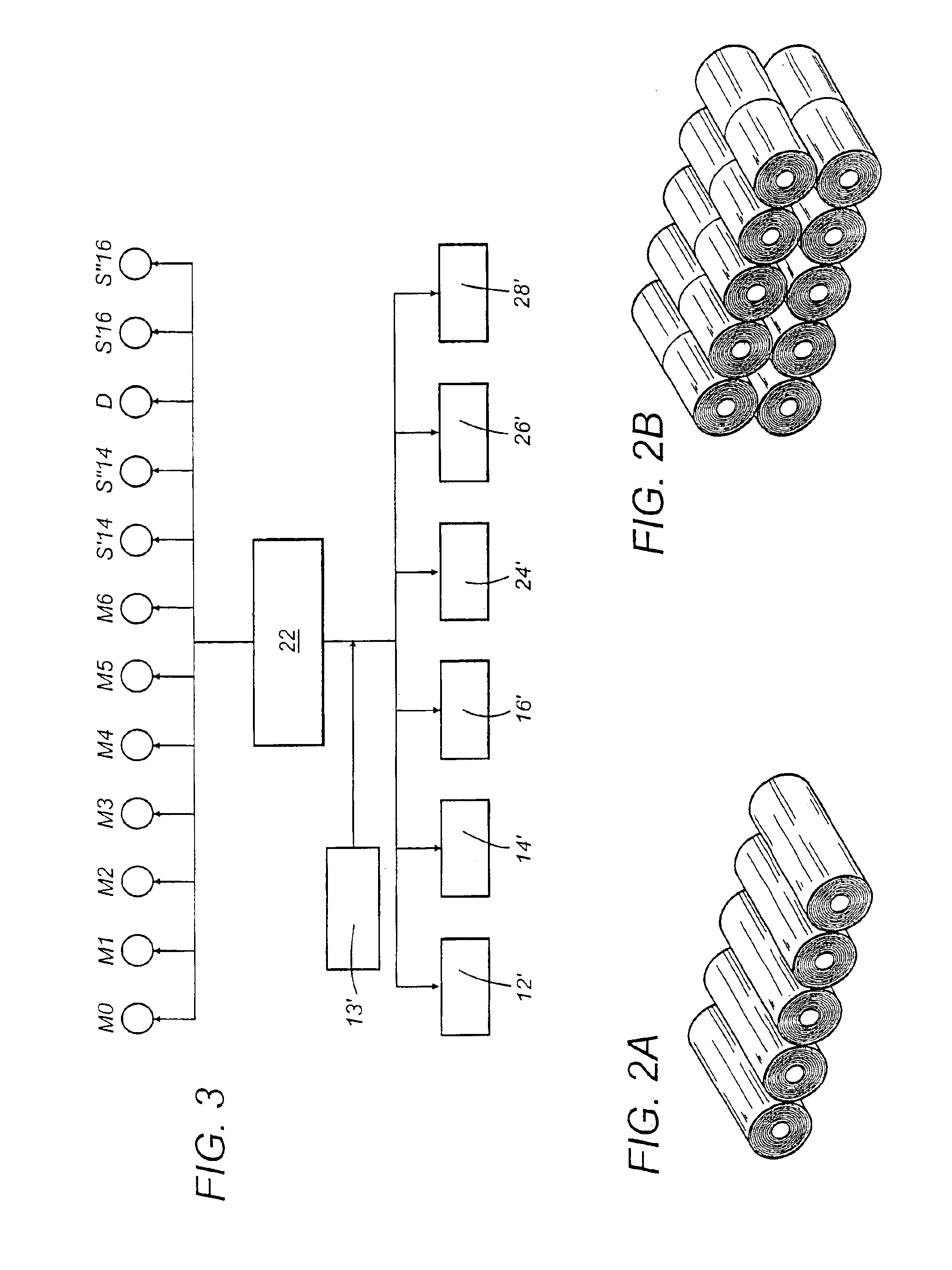Method and a plant for producing articles, in particular paper rolls or the like, and a conveying apparatus usable in said plant
a technology for conveying equipment and articles, which is applied in the field of method of operation of a plant for producing, conveying and packaging articles, can solve the problems of insufficient utilization of the high working rate potential of the above-mentioned known machines, low actual yield of the production plant, and inability to achieve the effect of high working rate potential, reducing the number of personnel assigned, and preventing erroneous system settings
- Summary
- Abstract
- Description
- Claims
- Application Information
AI Technical Summary
Benefits of technology
Problems solved by technology
Method used
Image
Examples
first embodiment
[0065]FIG. 1 illustrates a plant according to the present invention. The plant of this figure comprises a preferred embodiment of apparatus for conveying articles between an operative section positioned upstream 12 and a first and a second operative sections 14, 16 positioned downstream.
[0066]In particular, said upstream operative section is a machine 12 for forming rolls of paper material or the like starting from individual logs or elongated coils (not shown in the accompanying figures) and said downstream working sections are machines 14, 16 for packaging said articles into respective packs.
[0067]As FIG. 2A shows, the pack could, for instance, be constituted by a longitudinal row of rolls and by a single layer thereof, or, as shown in FIG. 2B, said pack could, for instance, be constituted by two layers of rolls, each of which is in turn subdivided into two respective parallel rows of said rolls. Obviously, with respect to what is shown in FIGS. 2A and 2B, the pack of rolls to be ...
second embodiment
[0148]FIG. 8 shows plant, in particular for obtaining articles in the form of paper rolls or the like.
[0149]This second embodiment presents a roll forming machine which, in known fashion, comprises, schematically, a series of sections that provide the logs to be cut into rolls, starting from a main loading coil, of considerable size, obtained directly from the paper mill. Said sections comprise an initial coil loading section 2, which generally supports at least a first and a second of said loading coils to allow for a continuous feeding of the apparatus for producing rolls and which unwinds the paper strip from the feeding coil and for transferring it to a successive section 4 for embossing the paper strip. Downstream of the embossing section, a re-coiling section 3, which receives the core tubes from an appropriate section 5 for their forming, winds on these elongated tubes a quantity of paper having a diameter corresponding to that of the rolls to be produced, obtaining the logs ...
PUM
| Property | Measurement | Unit |
|---|---|---|
| length | aaaaa | aaaaa |
| length | aaaaa | aaaaa |
| conveying velocity | aaaaa | aaaaa |
Abstract
Description
Claims
Application Information
 Login to View More
Login to View More - R&D
- Intellectual Property
- Life Sciences
- Materials
- Tech Scout
- Unparalleled Data Quality
- Higher Quality Content
- 60% Fewer Hallucinations
Browse by: Latest US Patents, China's latest patents, Technical Efficacy Thesaurus, Application Domain, Technology Topic, Popular Technical Reports.
© 2025 PatSnap. All rights reserved.Legal|Privacy policy|Modern Slavery Act Transparency Statement|Sitemap|About US| Contact US: help@patsnap.com



